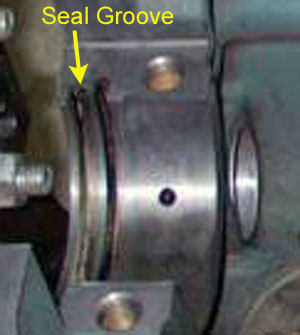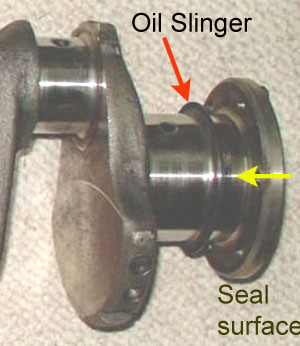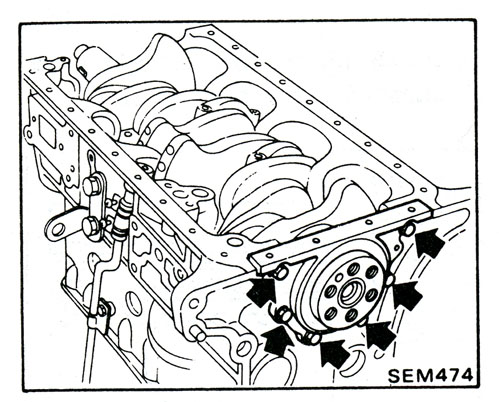EvergreenSD wrote:. . . there is light surface rust on the input shaft which was my leading theory. The rust is much less severe than I was expecting but maybe enough to cause an intermittent problem. I think that this clutch should have had years more service in it except that the throwout lever boot was not replaced which allowed water in to spoil the fun.
Water entering via the missing fork boot wouldn't be the big concern: the splines should have a light coating (
light) of grease. Not graphite, grease.
Light rust is enough. Worn splines can cause hangup too, I've had to replace one input shaft for that symptom (not a FS5W71). The disk should slide freely on the input shaft.
I was able to get the flywheel bolts off without an impact wrench which pleased me because I don't have one.
How will you apply enough torque (36 ft-lbs) to put the bolts back in? The tool to hold the flywheel is a KV101056S0, 1982 FSM pg EM-52 (for reference only) but the easiest method by far is to rent an impact wrench, if you don't want to buy one. I clean the bolts and holes and use Lock-Tite blue on the bolts. You've got to remove all traces of oil for Lock-Tite to be effective.
When I pulled the last bolt out I expected the flywheel to come right off but it didn't. I tried some light tapping and prying but no cigar.
Use a deadblow hammer on the facing edge (the side that the disk runs on) near the rim, with two bolts still installed but backed out several turns. You do
not want that flywheel to fall on you when it comes off. If you don't have a deadblow hammer, use a hardwood block: hold it to the flywheel with one hand, swing hammer with the other -- assuming you have two hands, of course. Sometimes, considerable force is necessary to break the "bond" to the crankshaft.
. . . will be necessary to have the flywheel machined given that it looks like it was done recently.
Good shop practice is to surface it if there is
any perceptible "ridge",
or if the clutch release action wasn't perfectly smooth -- ie if any judder on release was evident. Resurface and check runout as above, with a dial indicator.
Also what would you expect a shop to charge for this?
Our shop across the street gets $29 to resurface a carry-in flywheel -- non-stepped and dowels already removed. I don't think either of those apply to the SD flywheel.
I always check runout after mounting the flywheel back up. I've run into bent cranks twice, and grit at the mounting surface once, tilting the flywheel.
I know I'm not supposed to let the tranny hang on the clutch hub but I'm not sure how to be certain that it doesn't happen while wrestling that lump into position.
Use an alignment tool to center the disk prior to cinching up the clutch cover bolts. Chances are, your clutch kit comes with a plastic alignment tool. If not, spring for the $15 alignment tool setup, you'll use it again someday.
The 720 trans has to be shoved backward up onto the rear crossmember before bringing it forward to mate to the engine. Practically, this means that the trans is very stable during the wrestling phase. You shouldn't get into a position where the weight of the trans is entirely on the input shaft, but always watch the bellhousing-to-engine faces spacing and try to keep them parallel. And never use bellhousing bolts to "draw in" the transmission: if you can't get the two faces together by hand, something's wrong.
Have you already faced down the pilot bearing removal task?



